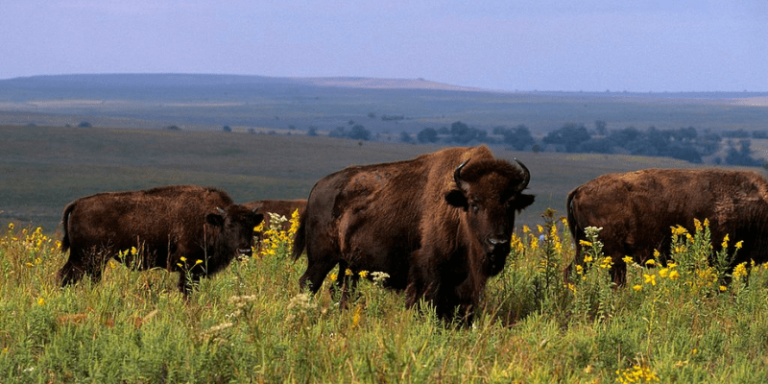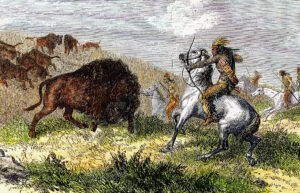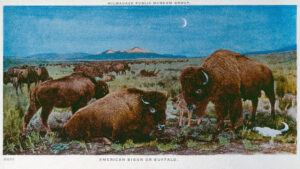The Bison: On the Brink of Extinction
The bison was hunted almost to extinction, but thanks to conservation efforts, they’re making a comeback.
By: Kelli Ballard | April 3, 2021 | 575 Words

(Photo by Wolfgang Kaehler/LightRocket via Getty Images)
The Bald Eagle has been a symbol of America’s freedom and liberty since 1782 when it became the national bird. But it is not the only animal to be honored by Americans. The bison, commonly called buffalo, became the national mammal of the U.S. on May 9, 2016. The scientific name for the animal is Bison bison (genus: Bison, species: bison) but some historians suggest the term buffalo came from the French word “boeuf” which means beef.
In the Beginning
Around 400,000 years ago, the bison came to America by crossing the ancient land bridge that connected North America with Asia. They were much larger than the ones we see today, and fossil records show that some had horns that measured nine feet from tip to tip. Yellowstone National Park is unique because it is the only place where these prehistoric beasts have lived continuously, pure descendants from the ancient bison – meaning they are free of cattle genes.
Bison are the largest mammal in North America. The bulls (males) weigh up to 2,000 pounds and can stand six-feet-tall while the cows (females) weigh half that at 1,000 pounds and reach between four and five feet in height. Bison calves, called “red dogs” because of their orange-red color, weigh between 30 and 70 pounds at birth.

(Photo by Ipsumpix/Corbis via Getty Images)
Native Americans and the Buffalo
A lot of Native American art shows the bison, and for good reason: These animals were important to their way of life. The indigenous people did not waste any part of the bison. Horns were used as tools, the fur for coats and lodge coverings, sinew for sewing and stitching, and so on. At the time, bison were plentiful on the range, but when the European settlers arrived, the animals were hunted almost to extinction.
In 1883, Theodore Roosevelt traveled to the Dakota Territory just to hunt bison. He spent a few years out west before returning to New York, but with a different outlook on the disappearing bison. As president, in 1905, he formed the American Bison Society to help protect the mammals.
Bison Today
Conservation of the bison still continues. In 1992, the InterTribal Buffalo Council was established. The organization worked with the National Park Service, transferring the animals from national parks to tribal lands. There are several refuges throughout the nation dedicated to making sure the bison thrives and continues to survive, and now through those efforts, the animals can be found in all 50 states.

(Photo by Fototeca Gilardi/Getty Images)
Interesting Facts
Although they are very large animals, they are surprisingly agile. Bison can run up to 35 miles per hour and can spin quickly, jump high fences, and are strong swimmers.
A typical day for the bison involves up to 11 hours of foraging for food. They eat mostly grasses and leafy plants, but don’t let their vegetarian diet fool you – they are very dangerous if they feel threatened.
Have you heard the term “wallowing in dirt?” It’s been used to describe humans, especially children after playing in the sandbox, but it also applies to bison. The animals roll in the dirt to help them shed fur as well as to keep away biting flies.
The bison has a long and powerful history. On the brink of extinction, they have been slowly returning and this resilience is just another reason this mammal was chosen as another American symbol.
















